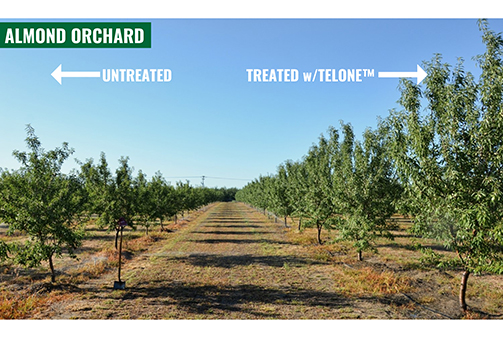Study: Japanese Beetle Spread Is Likely Across Washington State Within 2 Decades

The Japanese beetle can consume more than 300 different types of plants. Among those are grapes, cherries, and hops.
Photo by Melissa Schreiner, Colorado State University, Bugwood.org
The invasive Japanese beetle could make its way across the Evergreen State within two decades, according to a new study of their potential dispersion. Researchers are hoping intervention can help keep the pest at bay.
The iridescent, green-and-copper beetles damage plants by “skeletonizing” their leaves, chewing up all the soft green parts between the veins. They consume more than 300 plants and pose a serious threat to Washington agriculture as some of their favorite crops include grapes, hops, and cherries.
Once established, Japanese beetles are tough to eradicate, but it might be possible to keep them under control, says David Crowder, a Washington State University entomologist.
“These coordinated, intense efforts early in the invasion are really critical because if we wait too long, it just becomes an endemic problem,” Crowder says. “Hopefully, we can prevent the beetles from expanding beyond the quarantine areas, at least in the near future.”
The study, which is published in the Journal of Economic Entomology, found Japanese beetles would most likely thrive in the dry, agriculture-rich southeastern part of the state, where the first individuals were found three years ago. If they were to escape the quarantines in place in those areas, modeling shows they would likely spread throughout the region from Yakima to the Tri-Cities and north past Moses Lake. While the Cascades are a barrier, there are large areas of western Washington that have highly suitable habitat for Japanese beetles.
Japanese beetles have already spread through much of the U.S. They are believed to have arrived first on the East Coast in 1916 but are just now reaching Western states. The first beetles detected in Washington were found in a parking lot in the town of Sunnyside in 2020. Two years later Washington State Department of Agriculture trapped more than 20,000 in Sunnyside and Grandview. So far in 2023, trapping has shown the beetles mostly remain in those areas, though there has been one report just outside of Seattle.
This evidence shows quarantine zones can be effective, the researchers say. While the beetles can fly, it is often humans who help them reach new areas.
“People can notice the adult Japanese beetles very easily, but it’s very hard to notice them in the earliest stage of life, the eggs and larvae, so people might unintentionally help with their dispersal,” says Gengping Zhu, WSU research Assistant Professor and the study’s first author.
Japanese beetles lay their eggs near the soil surface and spend a lot of their life cycle underground as grubs feeding on roots and other organic material in the soil. When they turn into beetles, they emerge to feed on plants.
The effort to control the spread needs the help of the agriculture industry and residents to report where the beetles are found and take appropriate measures.
“Having an engaged citizenry is really important to preventing the spread of invasive species in general, even beyond the Japanese beetle,” Crowder adds. “Problems with invasive species are going to get worse and worse with climate change and increased human connectivity. The more coordinated we are, and the more we can identify the early stages of these invasions, the better.”
More information on how to spot Japanese beetles and help prevent their spread can be found at agr.wa.gov/beetles.










